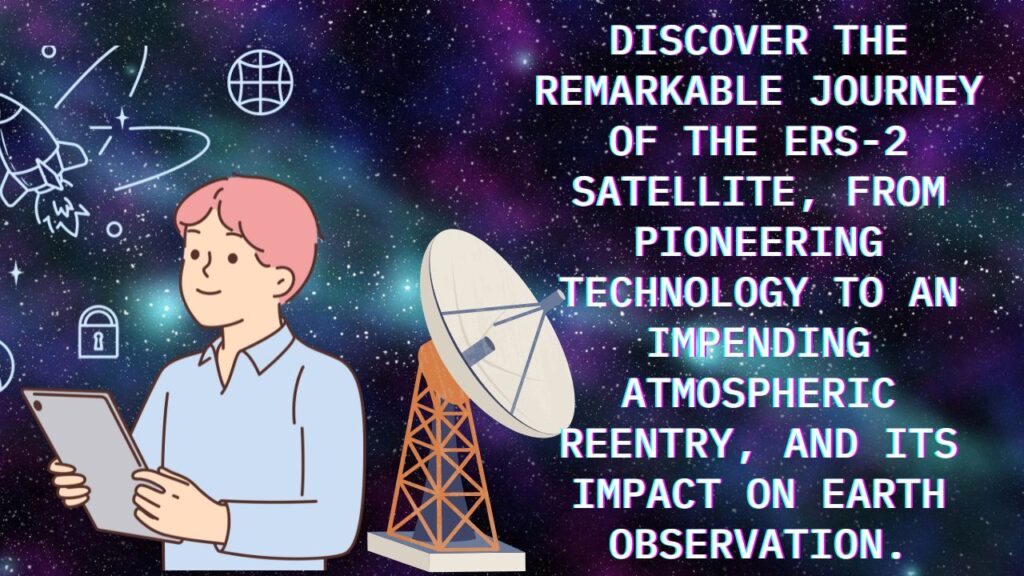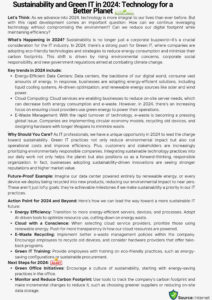
Introduction:
In the vast expanse of space, where humanity’s curiosity and ambition have led to remarkable technological feats, the European Space Agency’s (ESA) ERS-2 satellite stands as a testament to human ingenuity and exploration. Launched in 1995, this 2.5-tonne marvel of engineering represented cutting-edge technology, poised to revolutionize our understanding of Earth’s dynamics. However, as time progressed, ERS-2 encountered its share of challenges, leading to an unexpected turn of events – an out-of-control descent towards Earth’s atmosphere. This article delves into the captivating journey of the ERS-2 satellite, exploring its mission, technological innovations, setbacks, and the impending atmospheric reentry that has garnered global attention.
Mission Overview:
The ERS-2 satellite emerged as the European Space Agency’s second Earth observation mission, succeeding the success of its predecessor, ERS-1. From its inception, ERS-2 was equipped with a suite of advanced instruments, including Synthetic Aperture Radar (SAR) and radar altimeters, designed to capture intricate details of Earth’s surface, seas, and atmosphere. These instruments paved the way for groundbreaking research in areas such as sea surface temperatures, wind patterns, and atmospheric composition, providing invaluable insights into the planet’s dynamic systems.
Technological Innovations and Challenges:
Despite its initial promise, ERS-2 encountered several technical hurdles throughout its mission lifespan. In 2001, the satellite faced a critical setback with the failure of onboard gyro systems, threatening its ability to maintain stability and control. However, in a display of engineering brilliance, a collaborative effort involving ESA engineers and industry experts led to the development of innovative solutions to mitigate the gyro system failures. This resilience and adaptability ensured the continuity of ERS-2’s mission, albeit with modified operational procedures.
Subsequent challenges emerged in 2003 when the satellite’s onboard data storage system experienced malfunctions, necessitating a shift to real-time data transmission protocols. This transition, while posing logistical challenges, extended the satellite’s operational longevity by leveraging its remaining functional capabilities effectively. Despite these setbacks, ERS-2 persisted in its mission, contributing valuable data to scientific research and Earth observation initiatives.
End of Mission and Preparations for Reentry:
After completing over 82,000 orbits around the Earth, ERS-2’s mission officially concluded on September 5, 2011. With its operational objectives fulfilled, ESA embarked on a meticulous process to passivate the satellite, ensuring that its onboard systems were safely deactivated to minimize the risk of hazardous malfunctions. As part of this process, ERS-2’s altitude was strategically lowered through a series of maneuvers, setting the stage for its eventual reentry into Earth’s atmosphere.
Impending Atmospheric Reentry and Risk Assessment:
Despite meticulous planning and preparations, the specter of an uncontrolled atmospheric reentry looms over ERS-2. ESA’s latest projections indicate that the satellite is set to reenter the Earth’s atmosphere on Wednesday, February 21, 2024. While the likelihood of the satellite impacting populated areas remains low, the inherent unpredictability of its trajectory introduces an element of uncertainty. As the world awaits the satellite’s descent, efforts to track its path and assess potential risks are underway, underscoring the importance of proactive measures to mitigate any adverse outcomes.
Navigating through the annals of space exploration, the ERS-2 satellite’s journey serves as a testament to human ingenuity and perseverance. Its contributions to Earth observation, scientific research, and technological innovation have left an indelible mark on our understanding of the planet and its interconnected systems. However, as the satellite approaches the culmination of its mission with an imminent atmospheric reentry, it prompts reflection on the broader implications and lessons gleaned from its trajectory.
The ERS-2 satellite’s mission epitomizes the collaborative efforts of international space agencies, scientific institutions, and industry partners in advancing our understanding of Earth’s complex dynamics. From its inception, the satellite was envisioned as a tool for elucidating critical environmental phenomena, from monitoring climate patterns to studying geological processes. The data and insights gathered by ERS-2 have not only enriched scientific understanding but have also informed policy decisions and contributed to global efforts addressing environmental challenges.
One of the defining features of ERS-2’s mission was its ability to adapt and overcome technical challenges encountered along the way. The resilience displayed by ESA engineers and collaborators in devising innovative solutions to maintain the satellite’s functionality underscores the importance of flexibility and resourcefulness in space exploration. Moreover, the transition to real-time data transmission exemplifies the capacity to leverage existing technologies and infrastructure to extend the operational lifespan of space assets beyond their original design parameters.
As the ERS-2 satellite prepares for its final descent into Earth’s atmosphere, the prospect of an uncontrolled reentry raises questions about space debris management and mitigation strategies. While efforts have been made to passivate the satellite and minimize potential risks, the unpredictability of its trajectory underscores the need for enhanced monitoring and coordination among space agencies to track and mitigate orbital debris. Moreover, the event serves as a sobering reminder of the long-term implications of space missions and the responsibility borne by the global community to ensure the sustainable use of outer space.
Looking ahead, the legacy of the ERS-2 satellite will endure in the annals of space exploration, serving as a beacon of human achievement and a catalyst for future endeavors. Its contributions to Earth observation, technological innovation, and international collaboration will continue to resonate in scientific research and space exploration initiatives for years to come. As humanity embarks on new frontiers of space exploration and discovery, the lessons learned from the ERS-2 mission will serve as guiding principles for the responsible stewardship of space assets and the preservation of our cosmic environment.
Conclusion:
The journey of the ERS-2 satellite embodies the spirit of exploration, innovation, and resilience that defines humanity’s quest for knowledge and understanding. From its inception as a pioneering Earth observation platform to its current state of impending reentry, ERS-2 has traversed a path marked by triumphs, challenges, and scientific discovery. As it prepares to bid farewell to the cosmos and return to Earth, the legacy of ERS-2 serves as a reminder of the profound impact of space exploration on our understanding of the world and the importance of responsible stewardship of satellite technology.






